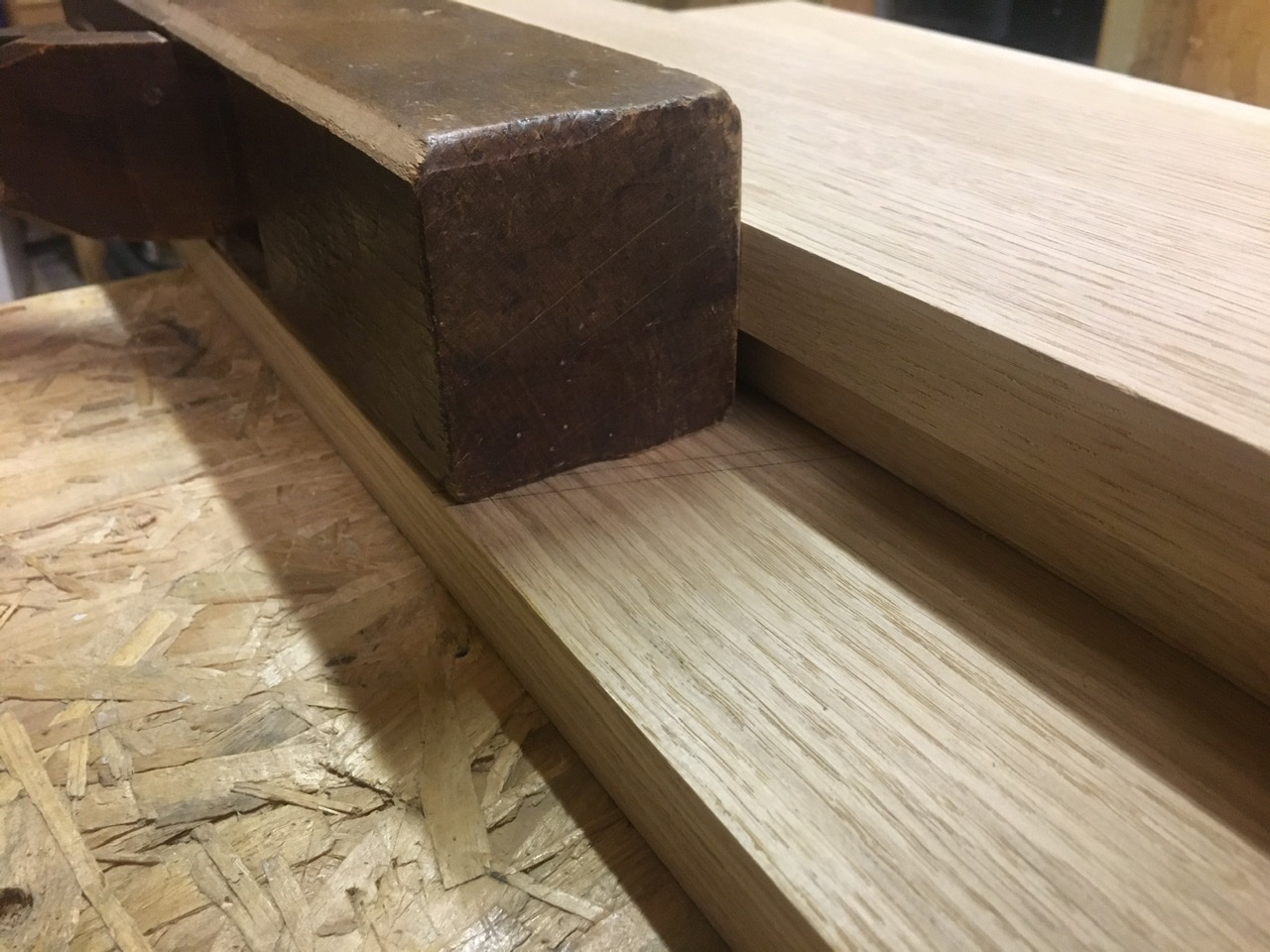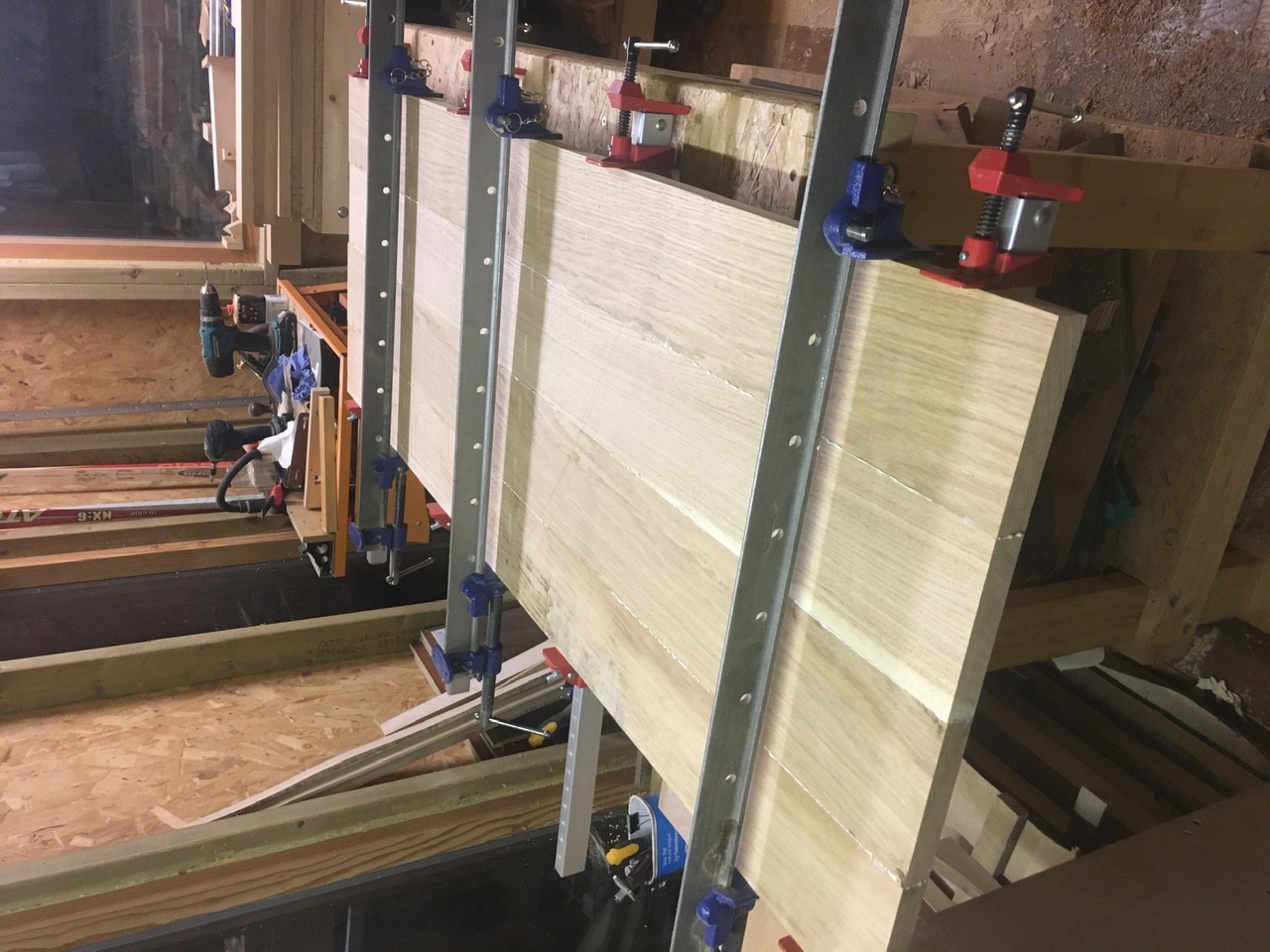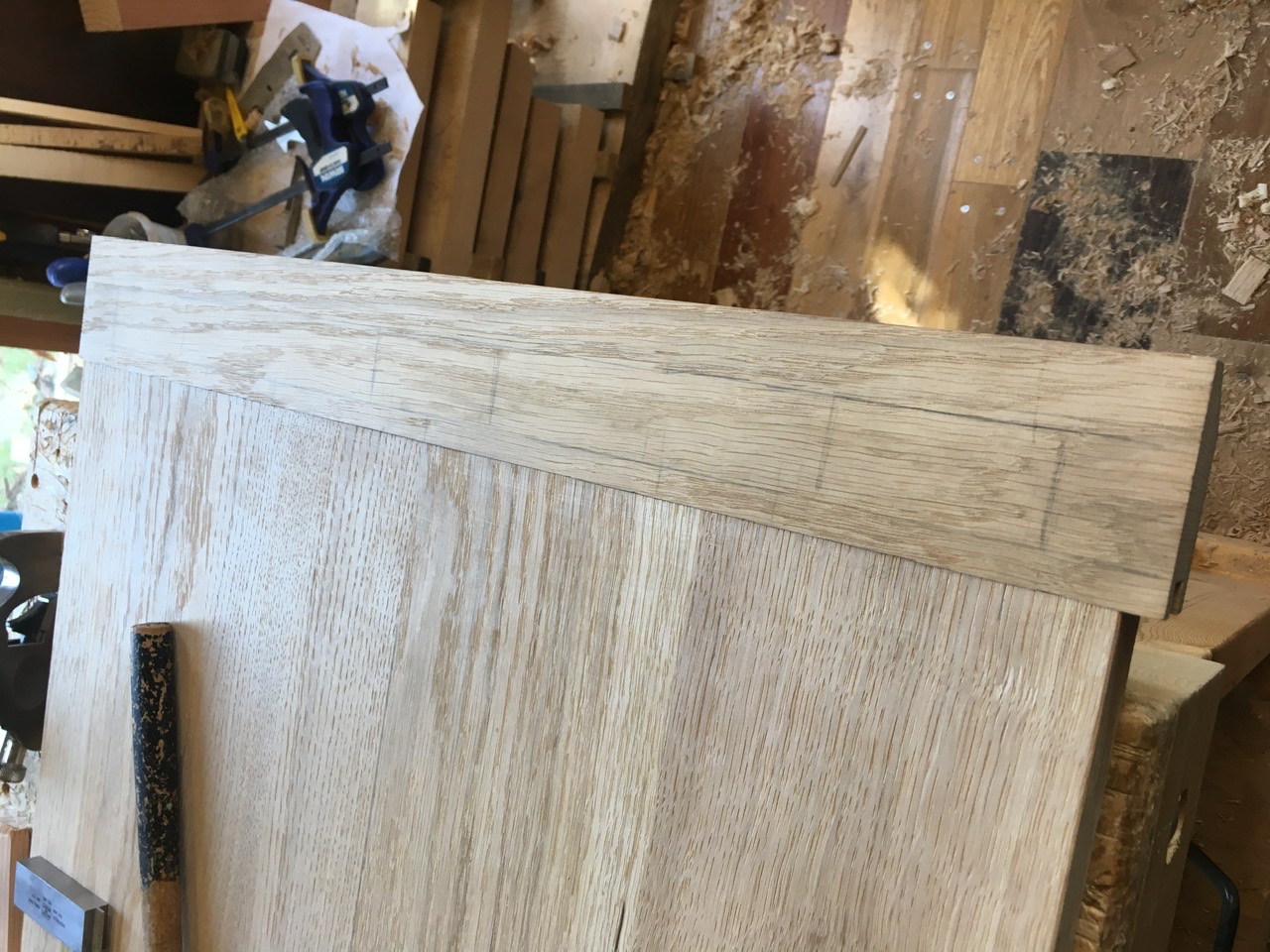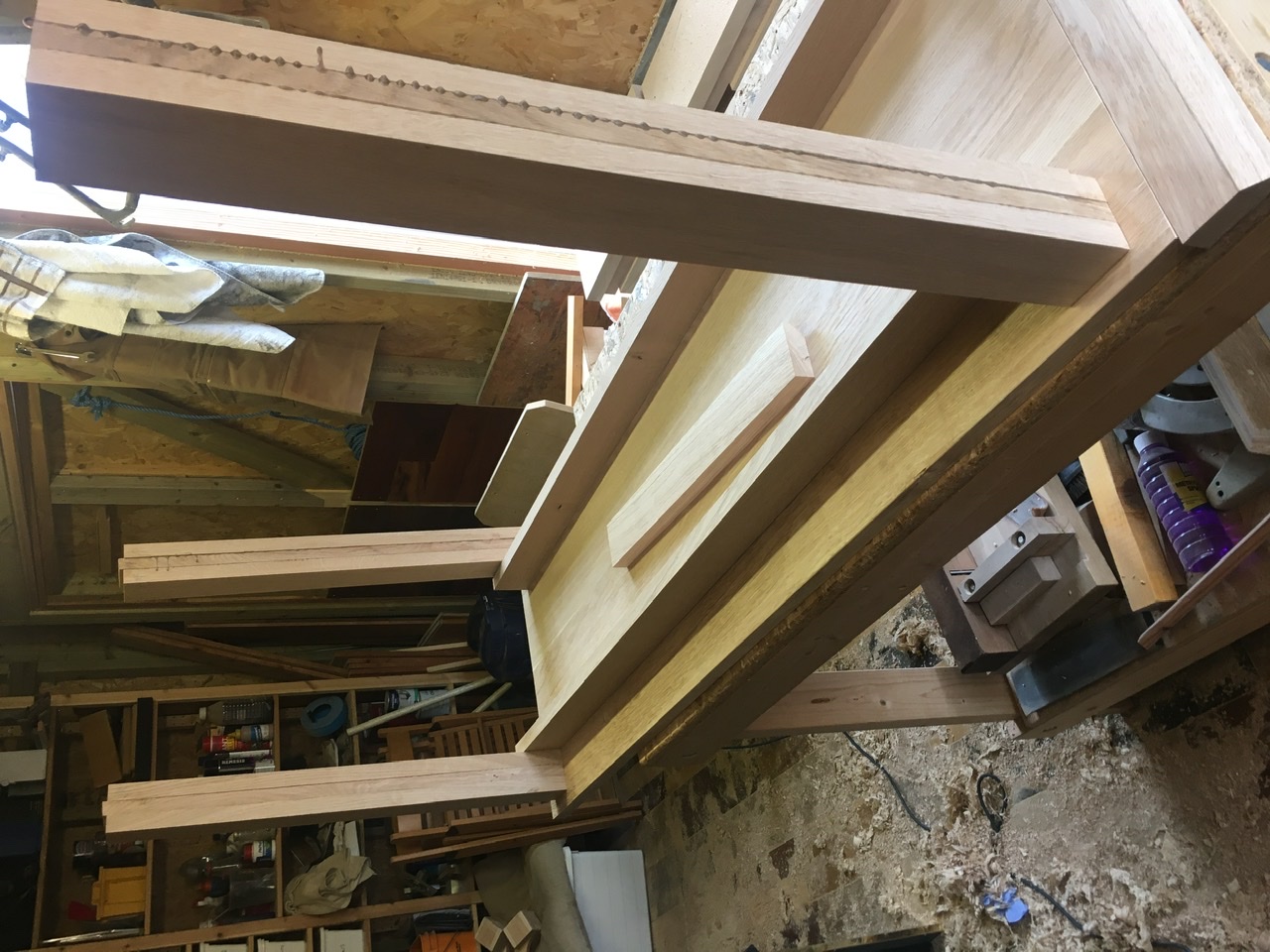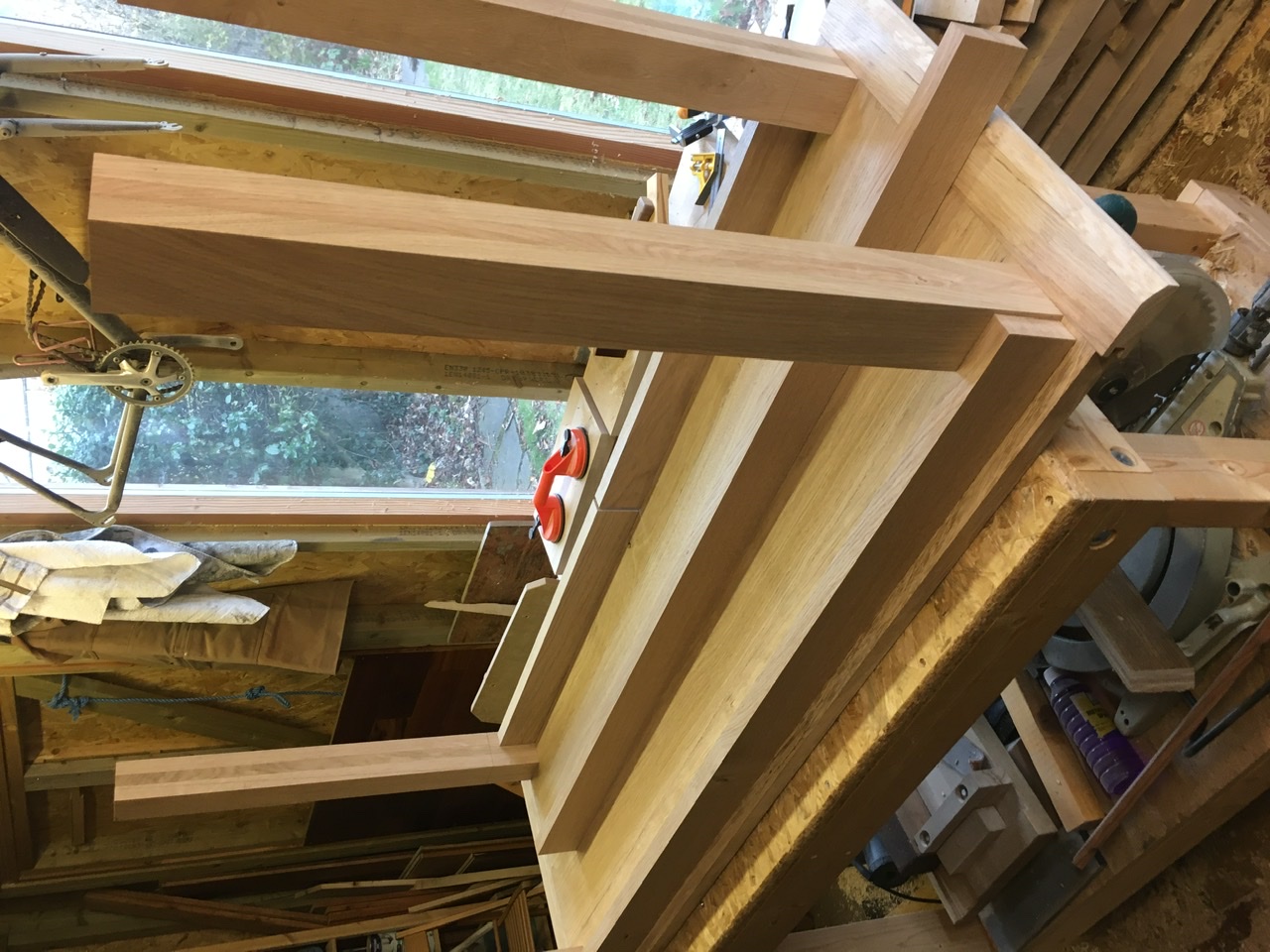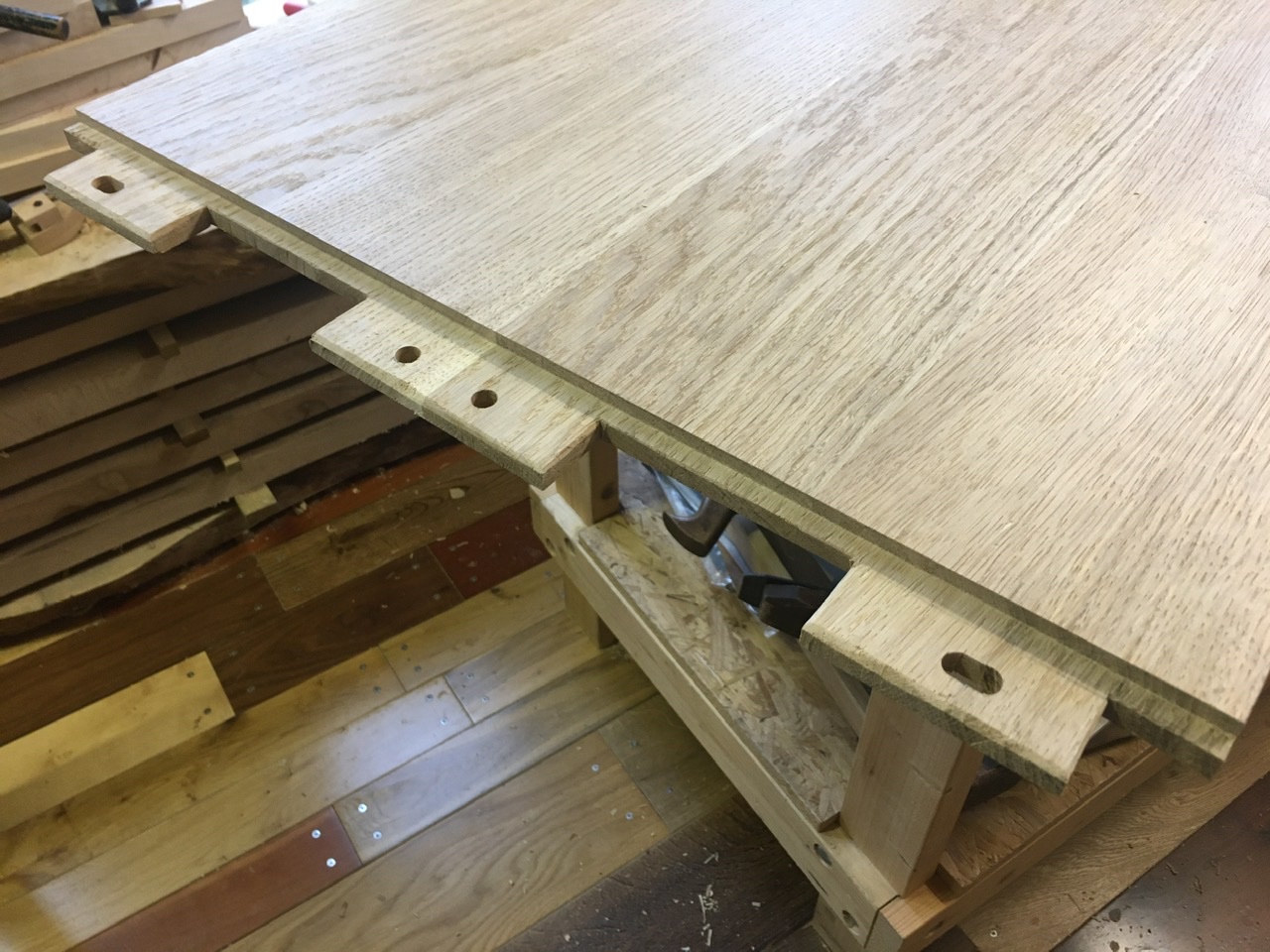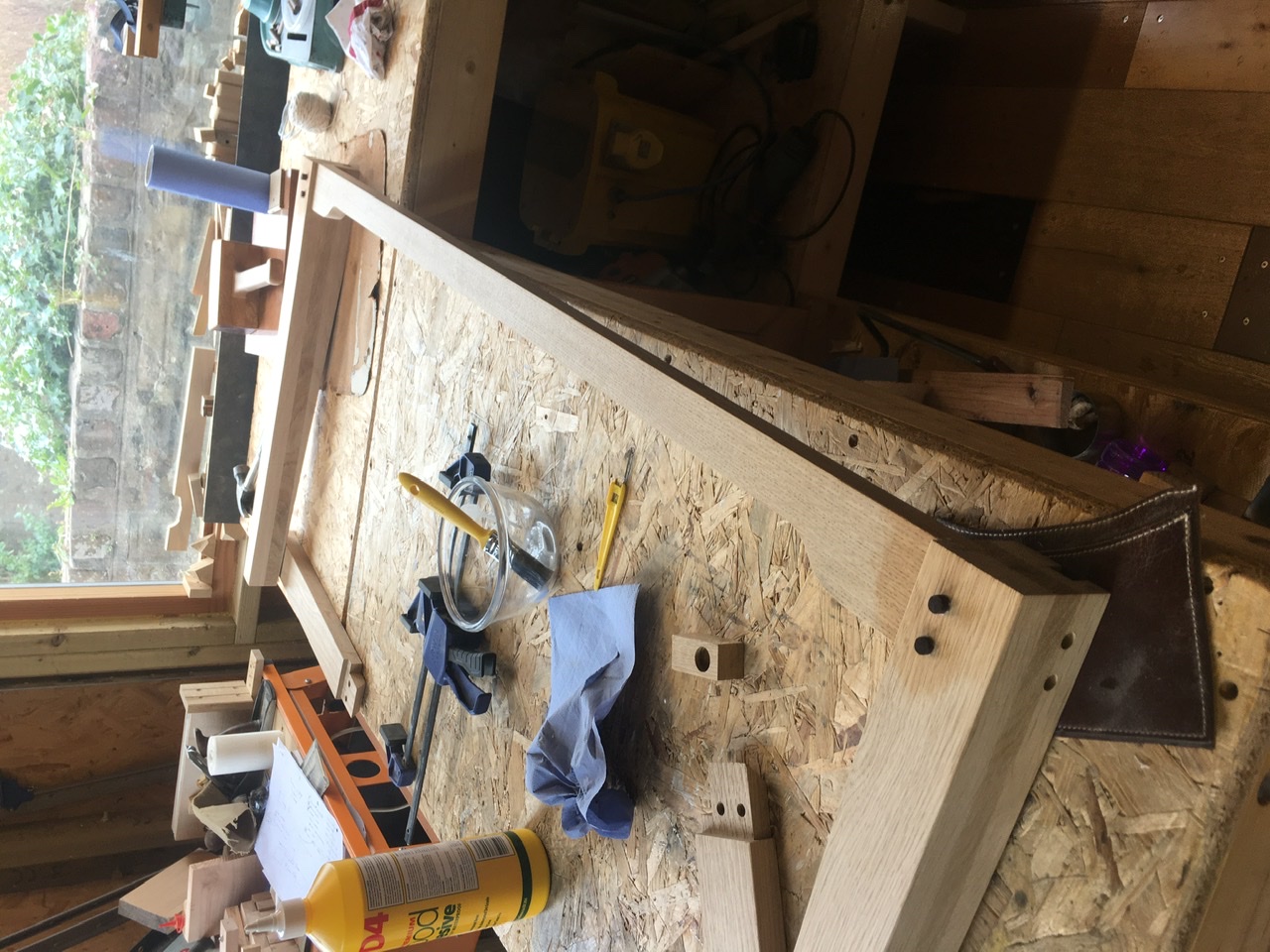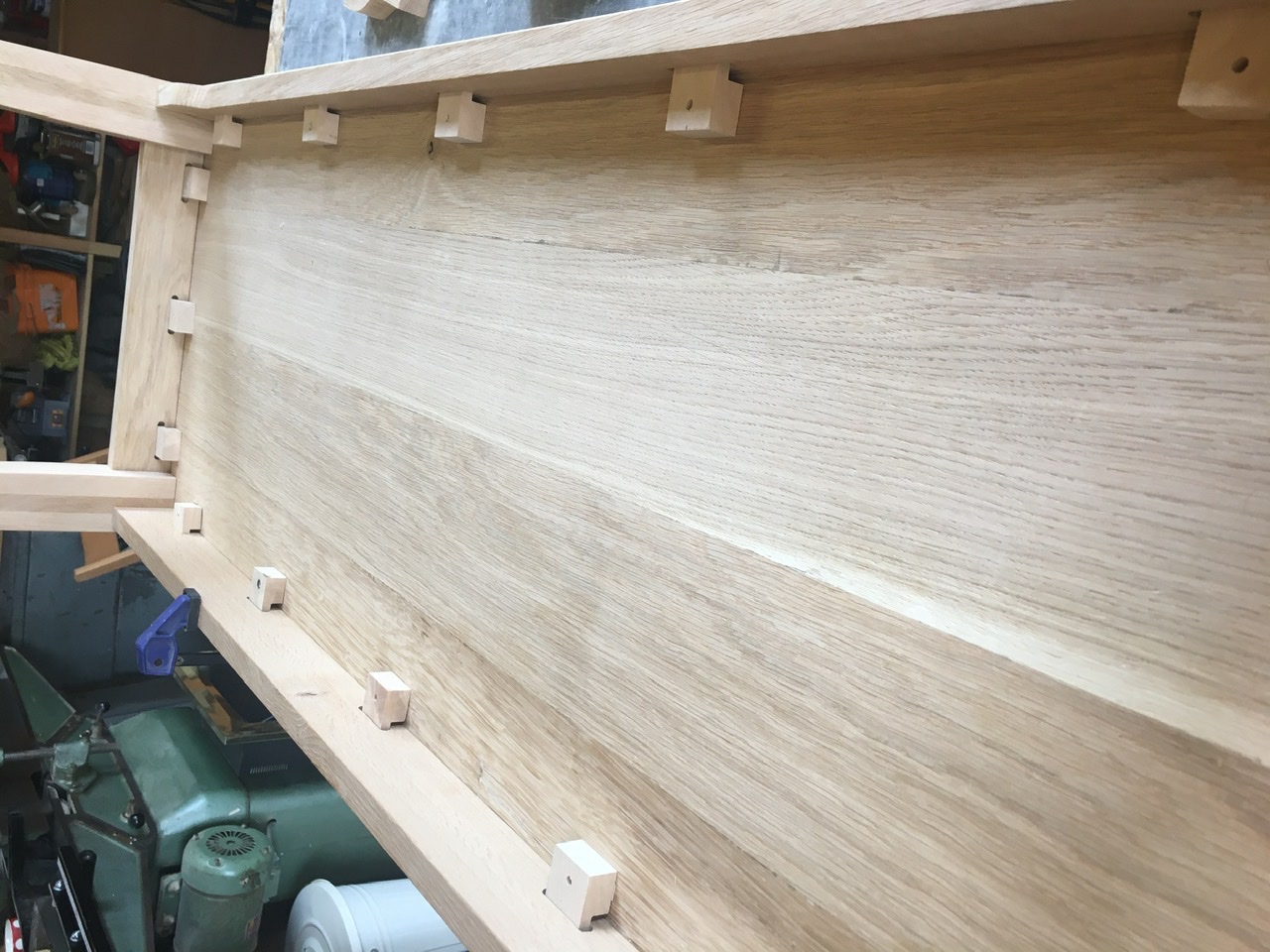Three weeks back the schools announced ‘over to you folks’ and my wife and I became teachers for our boys, both primary aged. We’re fortunate to have plenty of rooms, but with me also working from home, we were desk real estate lacking and the boys were working from the kitchen table. I know I’ll knock up a quick and dirty desk for them from those oak boards I have, it’ll only take a weekend. It didn’t it took three, which for me is still a vast improvement in execution time.
It started with the knowledge I only had six boards, each one 2100x140x27mm, and we needed a desk for two to sit at. Some planning was required.

Design was approved by the management, and it was to sit in the playroom spanning over the fire hearth, this set the length of the table at about 150cm with a depth of c.60cm. From 12.6m of board length 6m would be in the table top. I then had legs that would have to be laminated up and aprons etc. Could I get it all out the boards?

I bit of Tetris with parts and I had a cutting list. Biggest compromise was that I was going to have to cut the front and rear aprons (is that the correct term?) from a single board meaning my apron height would only be 70mm max. This ended up being a bit of a weakness, which you’ll see later.

When your cutting list calls for you to use 90%+ of your available material you need Lady Luck on your side. Fortunately I had four boards straight enough to get tops from and with some thought the remaining components were marked up.
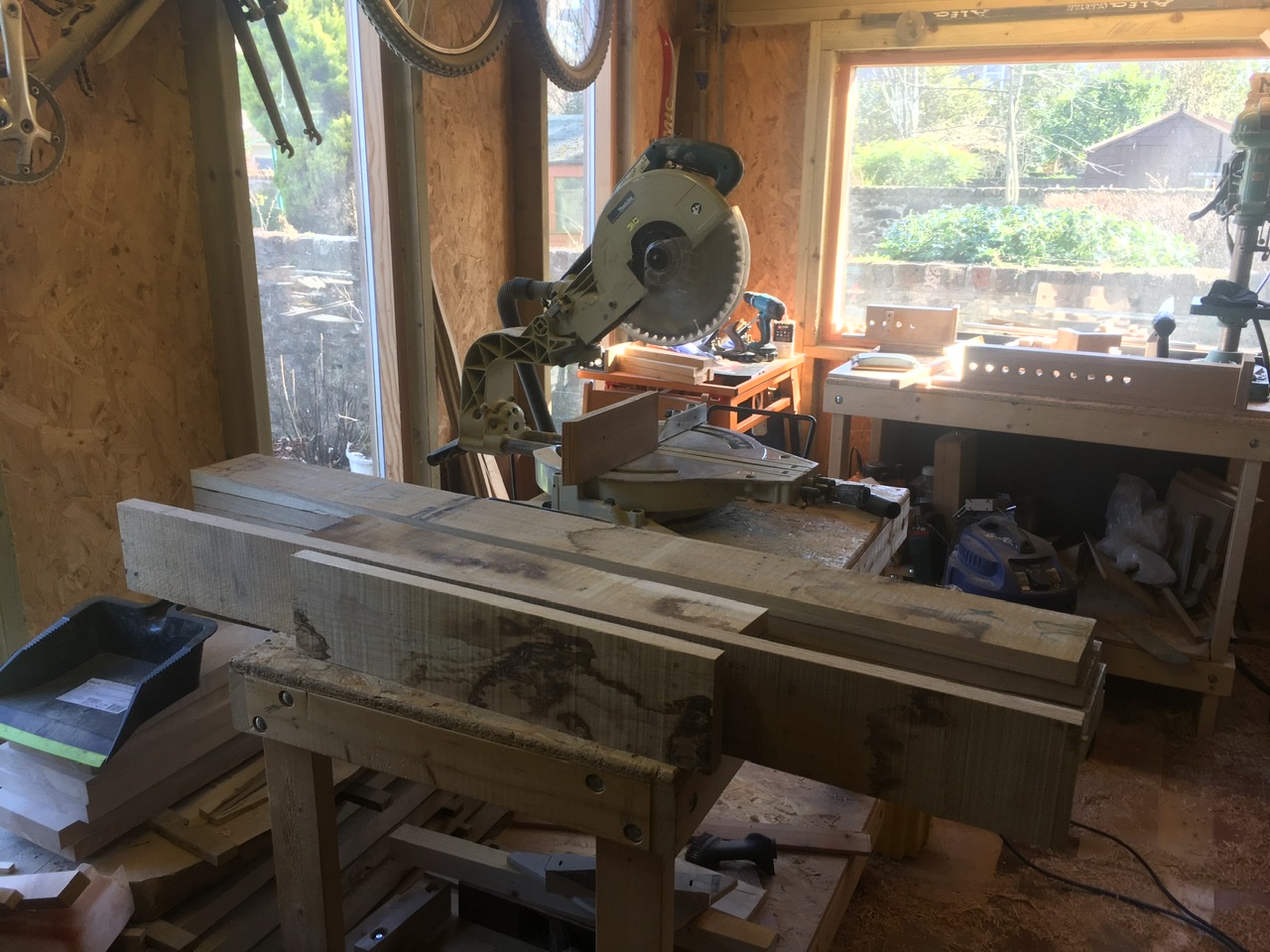
Some boards were ripped in half for aprons and legs.
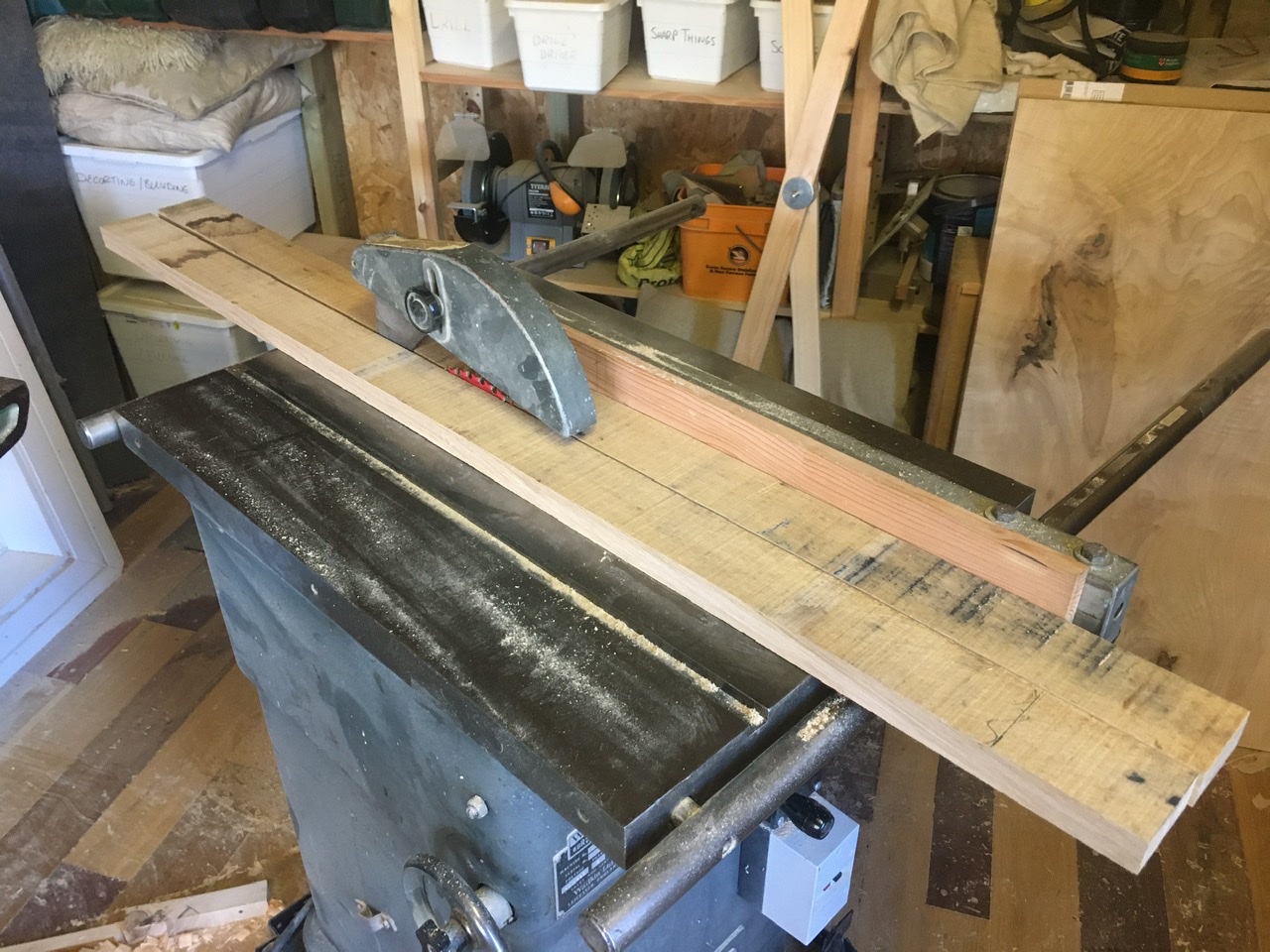
Top boards were face planed on the Wadkin BFT 9, and given a square edge.


Table top boards were shuffled to get the grain running all in the same direction, and the best pattern I could conjure.

With leg boards cut roughly to length I had a panic that they were nowhere near long enough and there was only one way to convince myself.
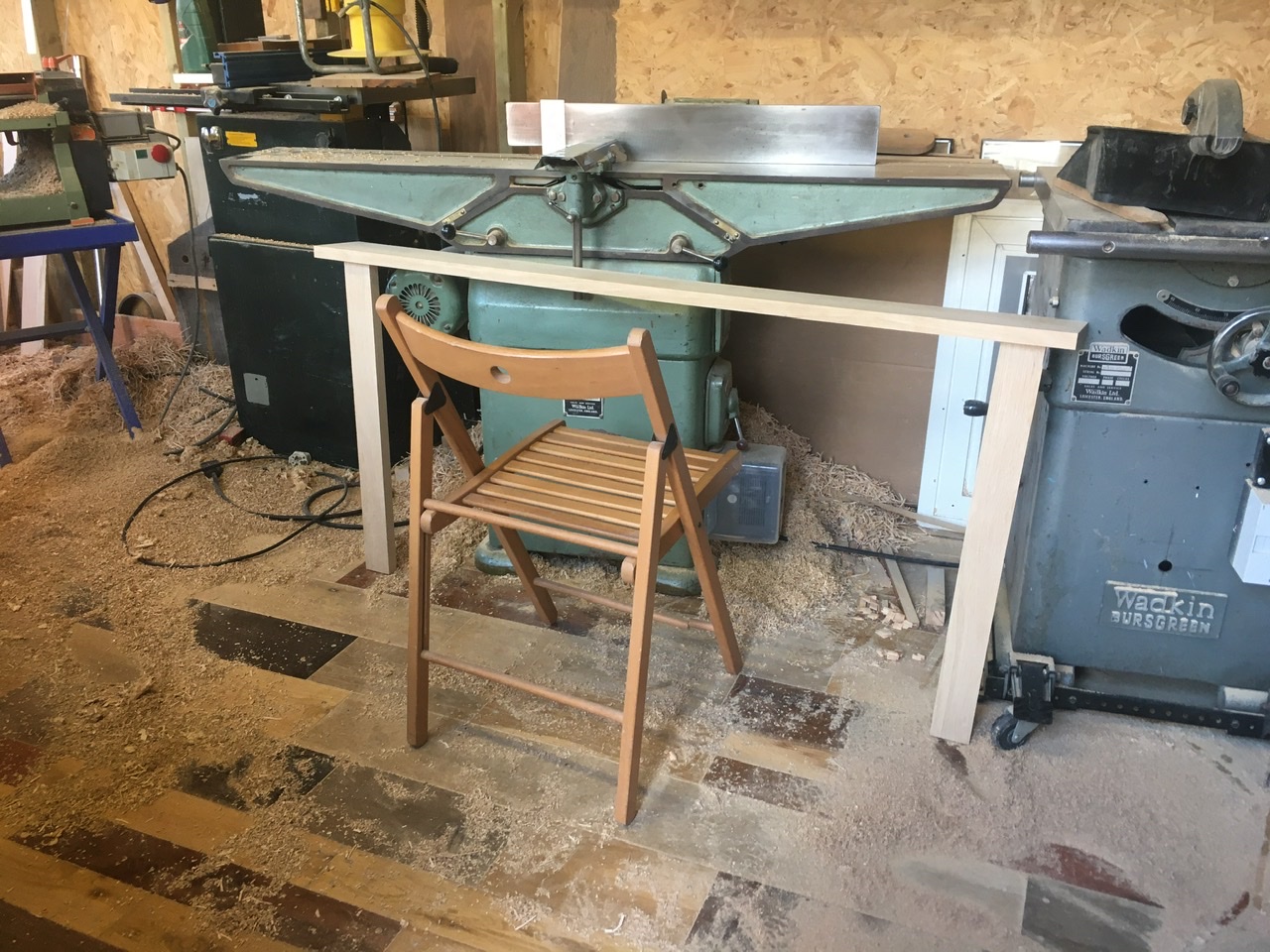
Leg boards had the faces hand planed to remove the scallops from the planer thicknesser and were laminated up. Home made franken-clamps to the rescue. You can never have enough clamps and my collection is pitiful!
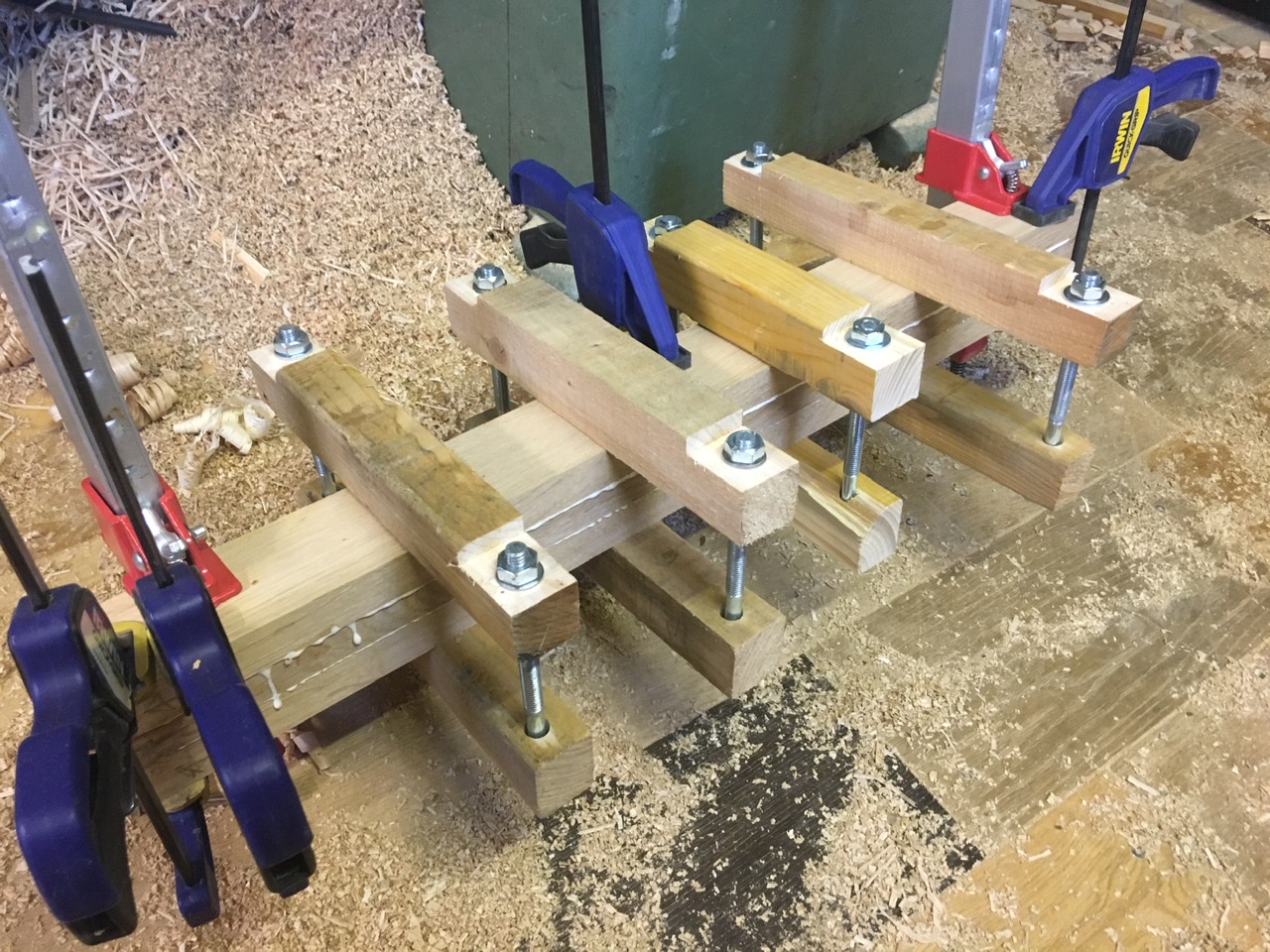
To be continued.
It started with the knowledge I only had six boards, each one 2100x140x27mm, and we needed a desk for two to sit at. Some planning was required.

Design was approved by the management, and it was to sit in the playroom spanning over the fire hearth, this set the length of the table at about 150cm with a depth of c.60cm. From 12.6m of board length 6m would be in the table top. I then had legs that would have to be laminated up and aprons etc. Could I get it all out the boards?

I bit of Tetris with parts and I had a cutting list. Biggest compromise was that I was going to have to cut the front and rear aprons (is that the correct term?) from a single board meaning my apron height would only be 70mm max. This ended up being a bit of a weakness, which you’ll see later.

When your cutting list calls for you to use 90%+ of your available material you need Lady Luck on your side. Fortunately I had four boards straight enough to get tops from and with some thought the remaining components were marked up.

Some boards were ripped in half for aprons and legs.

Top boards were face planed on the Wadkin BFT 9, and given a square edge.


Table top boards were shuffled to get the grain running all in the same direction, and the best pattern I could conjure.

With leg boards cut roughly to length I had a panic that they were nowhere near long enough and there was only one way to convince myself.

Leg boards had the faces hand planed to remove the scallops from the planer thicknesser and were laminated up. Home made franken-clamps to the rescue. You can never have enough clamps and my collection is pitiful!

To be continued.
Attachments
-
 EB276D77-09DF-4585-A64E-5C1F97AE4894.jpeg296.4 KB
EB276D77-09DF-4585-A64E-5C1F97AE4894.jpeg296.4 KB -
 07A9916B-7D85-49EB-948E-66A81A81DDED.jpeg293.8 KB
07A9916B-7D85-49EB-948E-66A81A81DDED.jpeg293.8 KB -
 EF3F0E3F-48EB-42A7-B79C-D815CEA055C9.jpeg374 KB
EF3F0E3F-48EB-42A7-B79C-D815CEA055C9.jpeg374 KB -
 1094C022-E8D0-46C8-A75F-CC572F59B127.jpeg358.3 KB
1094C022-E8D0-46C8-A75F-CC572F59B127.jpeg358.3 KB -
 73B7728C-64E6-4A9B-9C02-0688DE15FDC5.jpeg385.8 KB
73B7728C-64E6-4A9B-9C02-0688DE15FDC5.jpeg385.8 KB -
 12C0A747-7106-44E9-AA13-9FF6A06DC22C.jpeg386.4 KB
12C0A747-7106-44E9-AA13-9FF6A06DC22C.jpeg386.4 KB -
 CE75ED52-3C40-456D-9DB9-E6AAEB940C7A.jpeg244.6 KB
CE75ED52-3C40-456D-9DB9-E6AAEB940C7A.jpeg244.6 KB -
 E50271AC-73F1-41E3-B2ED-D274449A40E8.jpeg323.3 KB
E50271AC-73F1-41E3-B2ED-D274449A40E8.jpeg323.3 KB -
 B41AB083-EBA1-4DD3-B6CC-B4F2519C0F7D.jpeg446 KB
B41AB083-EBA1-4DD3-B6CC-B4F2519C0F7D.jpeg446 KB -
 ED64A1C4-BD16-4E67-8A06-E812D08E19F3.jpeg508.6 KB
ED64A1C4-BD16-4E67-8A06-E812D08E19F3.jpeg508.6 KB




